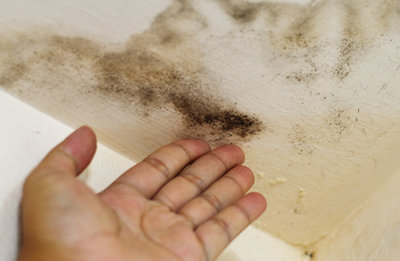Even the most fastidious housekeepers may find themselves battling against mold and mildew. Basements, bathrooms and other damp areas are ideal breeding grounds for these fungal nuisances, though they’re mild (if persistent) problems in most well maintained homes. But if the fungi is allowed to grow unchecked — or worse, if there’s an unknown growth in a hidden area of the home — it can develop into a major issue.
Spot the Difference
If you want to keep a keen eye out for both mold and mildew, you’ll want to know the difference. Mildew presents as a tiny fungus that grows along surfaces as a thin, powdery film that is white or gray in color. Mold is darker — usually black, brown or green — and can build up more substantially than mildew, creating a fuzzy appearance.
Both may have a musty smell, and both must be eliminated as part of maintaining a clean and healthy home.
For Your Health
Mold and mildew are unsightly and smelly, but they can also pose a health hazard. Exposure to these fungi can result in respiratory problems among healthy people, but they pose an even greater risk to people with existing respiratory conditions like asthma. Other people may have a particular sensitivity to mold similar to seasonal allergies; this can result in headaches, congestion, coughing, eye irritation and other symptoms.
Scrub a Dub
Fortunately, mold and mildew are relatively easy to clean. A little scrubbing with a soft-bristled brush and some soapy water will remove almost all of the material, but as long as you’re doing the dirty work, you may as well kill the fungi as effectively as possible. The best way to do that is with diluted bleach in a spray bottle — spray the mixture on affected areas and let it sit for 10 minutes, then scrub clean and rinse.
Find the Source
If you find yourself regularly cleaning mildew or even the occasional mold in a poorly ventilated shower area, that may not be cause for concern. Mold and mildew thrive in damp areas, and sometimes the best solution is just diligent cleaning.
But if you’re finding mold and mildew in areas that shouldn’t be damp, that can be a sign of big trouble. There could be a leak allowing rainwater to seep into your home, or there could even be a leaky pipe hidden within your walls. Investigating the area of the mold development may lead you to the source, but if not, you should contact a plumber or home services professional to conduct a more thorough investigation.
Turn to the Pros
If you need help fixing a leak or are ever in doubt about the source of a mold or mildew problem, don’t hesitate to call your local plumbing professionals.
Copyright to the original publisher for benjaminfranklinplumbing.com
Sponsored by The econcierge Delivering the usual exceptionally. Get in touched with them at [email protected]

